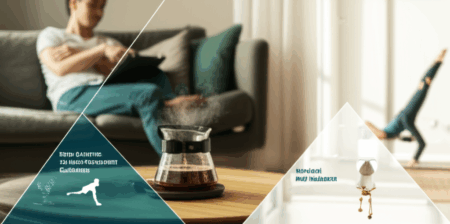Parkinson’s disease, a progressive neurological disorder affecting movement, presents significant challenges for those diagnosed. While there’s currently no cure, emerging research highlights the powerful role of exercise in managing symptoms and potentially slowing disease progression. This article delves into the importance of exercise for individuals with Parkinson’s disease, featuring insights from neurologists and practical workout routines to follow.
Understanding Parkinson’s Disease and the Dopamine Connection
Parkinson’s disease arises from the brain’s insufficient production of dopamine, a crucial neurotransmitter that facilitates communication between brain cells and controls movement. The resulting disruption in nerve signals leads to a variety of motor symptoms, including:
- Tremors
- Muscle Stiffness
- Bradykinesia (slowness of movement)
- Postural Instability
Beyond motor symptoms, Parkinson’s can also manifest in non-motor symptoms such as fatigue, depression, cognitive difficulties, and sleep disturbances.
Exercise: A Multifaceted Approach to Parkinson’s Management
Exercise isn’t just beneficial for general health; it’s emerging as a vital component in Parkinson’s disease management, impacting both motor and non-motor symptoms. Studies indicate that individuals with Parkinson’s who engage in regular physical activity experience:
- Improved Gait and Balance
- Enhanced Motor Coordination
- Reduced Tremors and Rigidity
- Better Cognitive Function
- Improved Mood and Reduced Depression
- Enhanced Sleep Quality
- Reduced Constipation
Moreover, research suggests exercise may have a neuroprotective effect, potentially slowing the disease’s progression by promoting brain plasticity, creating new neural pathways, and strengthening existing ones.
The Neuroprotective Potential of Exercise
Recent studies are exploring the possibility that high-intensity exercise can lead to disease modification. Sule Tinaz, MD, PhD, a Yale Medicine neurologist specializing in movement disorders, led a study that found high-intensity interval training three times a week for six months increased the dopaminergic signal in the brain. This suggests that exercise might improve neuron function, making existing dopamine-producing neurons healthier and more productive.
Another study revealed that high-intensity aerobic exercise preserved dopamine-producing neurons, the brain cells most vulnerable to destruction in Parkinson’s disease. Brain imaging showed an increase in neuromelanin and DAT signals in the substantia nigra after a six-month program, suggesting that high-intensity exercise may help the dopaminergic system grow healthier.
Exercise as Primary, Secondary, and Tertiary Prevention
Exercise can play a role in:
- Primary prevention: Reducing the risk of developing Parkinson’s disease.
- Secondary prevention: Slowing the progression of the disease.
- Tertiary prevention: Improving symptoms and quality of life.
Types of Exercise Recommended for Parkinson’s Disease
A well-rounded exercise program for Parkinson’s should incorporate the following key components:
Aerobic Activity:
- Benefits: Improves cardiovascular fitness, enhances brain function, and reduces movement disorders.
- Examples: Walking, cycling, swimming, dancing, jogging, and water aerobics.
- Recommendations: Aim for at least 30 minutes per day, three times a week, at a moderate to vigorous pace. The Parkinson’s Foundation and the American College of Sports Medicine recommend 150 minutes (2.5 hours) a week of moderate to vigorous exercise. Use the “talk test” to gauge intensity: at a moderate pace, you should be able to talk but not sing; at a vigorous pace, you should only be able to say a few words before pausing to breathe.
Strength Training:
- Benefits: Improves muscle strength, which can decrease among people with Parkinson’s disease, contributing to postural instability, gait difficulties, and bradykinesia.
- Examples: Handheld weights, weight machines, resistance bands, bicep curls, tricep dips, pull-ups, squats.
- Recommendations: Aim for 30 minutes of strength training two or three times a week, spacing out workouts. Perform 10-15 repetitions in 1-3 sets for each muscle group, working each muscle group 2-3 times every week.
Balance, Agility, and Multitasking:
- Benefits: Improves balance, posture, postural stability, and protects against falls, which people with Parkinson’s disease are at greater risk of.
- Examples: Yoga, Tai Chi, boxing, dancing.
- Recommendations: Include balance exercises in your schedule at least two or three times a week, and as often as seven times per week.
Flexibility:
- Benefits: Relieves stiffness and improves range of motion.
- Examples: Dynamic stretching, deep breathing.
- Recommendations: Stretch at least two or three days per week, or daily if possible.
Other Beneficial Activities
- Tai Chi: Improves balance, coordination, cognitive function, and emotional health.
- Art Therapy: Enhances coordination.
- Cognitive Exercises: Improves mental well-being.
Sample Workout Routine for Parkinson’s Disease
This sample routine incorporates elements from the recommended exercise types and can be modified based on individual needs and abilities. Always consult with a neurologist or physical therapist before starting any new exercise program.
Warm-up (5-10 minutes)
- Gentle stretches: Neck rotations, shoulder rolls, arm circles, torso twists, leg swings.
- Light aerobic activity: Marching in place, stepping side to side.
Aerobic Exercise (20-30 minutes)
- Choose one of the following activities:
- Brisk walking: Maintain a pace where you can talk but not sing.
- Stationary cycling: Adjust resistance to maintain a moderate intensity.
- Swimming: Focus on consistent strokes and breathing.
- Interval training: Alternate between periods of higher intensity (e.g., faster walking, increased resistance on the bike) and lower intensity (e.g., slower walking, decreased resistance) to challenge your cardiovascular system.
Strength Training (20-30 minutes)
- Perform 10-15 repetitions of each exercise for 1-3 sets. Rest for 1 minute between sets.
- Bicep curls: Use light dumbbells or resistance bands.
- Tricep dips: Use a chair or bench for support.
- Squats: Stand with feet shoulder-width apart and lower your hips as if sitting in a chair.
- Calf raises: Stand with feet flat and rise up onto your toes.
- Assisted pull-ups: Use a pull-up machine or resistance band for assistance.
- Focus on proper form and controlled movements to avoid injury.
Balance and Agility (10-15 minutes)
- Balance exercises:
- Standing on one leg: Hold for 10-30 seconds, gradually increasing the time as you improve.
- Heel-to-toe walking: Walk in a straight line, placing the heel of one foot directly in front of the toes of the other foot.
- Tai Chi: Practice slow, flowing movements to improve balance and coordination.
- Agility exercises:
- Cone drills: Set up cones in a line or zigzag pattern and practice walking around them.
- Step-overs: Step over low obstacles (e.g., books, cones) to improve footwork and coordination.
- Ensure a safe environment with support nearby in case you lose your balance.
Cool-down and Stretching (5-10 minutes)
- Hold each stretch for 20-30 seconds.
- Hamstring stretch: Sit on the floor with legs extended and reach for your toes.
- Quadriceps stretch: Stand and pull one foot towards your buttocks.
- Calf stretch: Lean against a wall with one leg extended behind you.
- Shoulder stretch: Reach one arm across your body and gently pull it with the other arm.
Important Considerations for Exercising with Parkinson’s
- Consultation: Always consult with your neurologist, physician, and physical therapist before starting any new workout program to determine the best exercises for you.
- Timing: The ideal time to exercise is when your mobility is at its best, typically about an hour after taking medication.
- Consistency: The best way to see benefits is to exercise consistently.
- Intensity: Exercise as often and as long as possible, adjusting based on your symptoms.
- Variation: Vary your exercises and where you perform them to reduce boredom and increase motivation.
- Enjoyment: Choose exercises you enjoy to make the routine more sustainable.
- Warm-up and Cool-down: Always warm-up before exercising and cool down afterward to prevent injury.
- Recovery: Allow for proper recovery after activity to prevent muscle stiffness.
- Safety: Be cautious and ensure a safe environment to avoid falls.
Conclusion: Exercise as a Cornerstone of Parkinson’s Care
While Parkinson’s disease presents significant challenges, exercise offers a powerful and multifaceted approach to managing symptoms and potentially slowing disease progression. By incorporating aerobic activity, strength training, balance exercises, and flexibility work into a regular routine, individuals with Parkinson’s can improve their motor skills, cognitive function, and overall quality of life. Remember to consult with healthcare professionals to create a personalized exercise plan that meets your specific needs and abilities. Embrace exercise as a cornerstone of your Parkinson’s care, and experience the transformative benefits it can bring.







